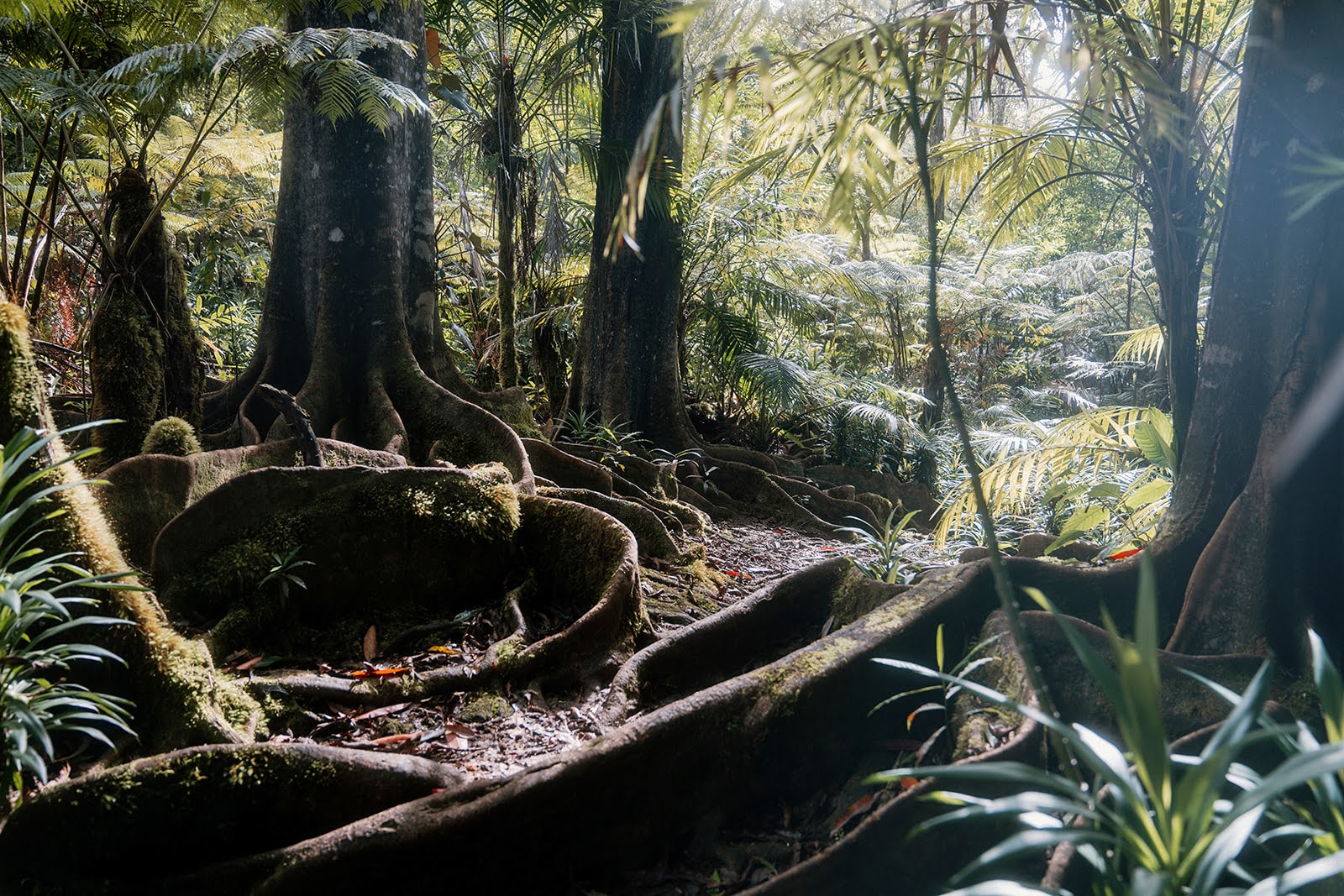The Quiet Intelligence of Moss: Nature’s Oldest Pioneer

Underfoot, it cushions each step. Overhead, it hangs like a gentle veil amongst the canopies. Along lava rock, it clings with a quiet persistence…Moss may be small, but it’s one of the oldest and most underrated powerfhouses in the forest.
As tiny as it is, moss shapes the entire rhythm of the ecosystem. While often overlooked, it’s presence is absolutely vital. Let’s dive into this mysterious magic and world of moss!
What Is Moss, Really?
Moss isn’t like the flowering plants you might know. It has no roots, no blossoms, and no vascular system to transport water. Instead, it drinks straight through its tiny leaves, absorbing life from rain, mist, and dew.

And it’s old—really old! Moss has been around for more than 450 million years, predating trees and even most land animals. It was one of the first to step out of the water and onto land, making moss not just a plant, but a pioneer.
Intelligence in Stillness

It’s age and evolutionary adaptation makes it incredibly resilient and intelligent, able to adapt to all surroundings and support life in all places. It might not have a brain or nerves, but moss has its own way. It senses where the light filters through and leans toward it. It grows with moisture after a mist, but shrinks in drought.
Moss even “remembers”—as scientific studies suggest that moss can retain information about previous environmental conditions and respond accordingly! Makes sense, if it’s been around for more than 450 million years!
This kind of intelligence is quiet but strongly adaptive. Moss thrives in places others can’t: dark, damp, nutrient-poor environments where it gently makes a life. Creating a backbone for all other life to thrive.
The Role Moss Plays in a Cloud Forest

In cloud forests—the misty, high-elevation forests where clouds feed the canopy instead of rain—moss acts as so much more. It’s a waterkeeper, architect, and life-giver. Let’s talk about how:
- Water Harvesting from the Air:
In a cloud forest, water doesn’t just fall from the sky—it floats in the air. Moss captures this airborne moisture like a living net. Draped over branches, rocks, and trees, moss absorbs fog, mist, and dew, turning vapor into liquid sustenance. This moisture then slowly drips down into the soil, feeding not just moss itself, but the entire forest ecosystem! - Hydrological Buffer:
During heavy rains, moss acts like a sponge—soaking up water, then releasing it gradually. This buffers the system against floods and helps maintain consistent soil hydration during dry spells. In many ways, moss regulates the forest’s pulse. - Cradle for Life:
Moss creates cool, damp microhabitats essential for amphibians, insects, fungi, and even orchids that rely on its moisture-retaining abilities. It cradles germinating seeds and offers protection to young roots in a delicate nursery of green. - Soil Anchoring & Regeneration:
On steep slopes and volcanic terrain, moss carpets hold soil in place, preventing erosion and landslides. As it breaks down over time, it contributes organic matter, slowly building up fragile mountain soil. - Atmospheric Alchemy:
Moss plays a role in purifying the air, filtering out particles and maintaining the humid conditions that define a cloud forest. It keeps the air clean and the atmosphere moist—creating the very conditions it needs to thrive, and helping the forest breathe.
A Mindfulness Invitation

The next time you’re in the forest, kneel close to a patch of moss.
Notice the delicate textures. The velvety surface. The beads of moisture glistening like tiny jewels. The intricate network that sustains life in silence.
Try a “moss meditation”: Let yourself slow down to moss-speed. Feel into its pace. Ask yourself, What might this gentle being teach me today?
To be like moss is to practice patience, softness, presence. To adapt. To make something beautiful and essential, even in hard places. Moss reminds us that we don’t need to force growth. We can listen. We can trust the environment we’re in and still thrive.
